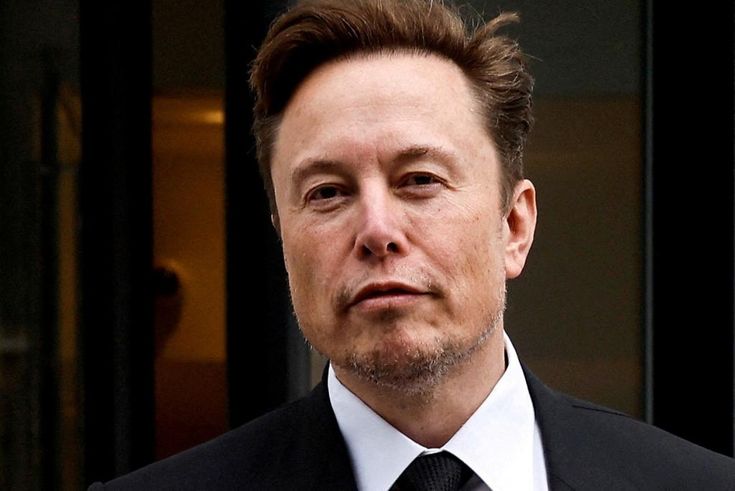Tesla’s evolution underscores the transformative power of steadfast commitment and strategic foresight.

2018: Navigating “Production Hell”
In 2018, Tesla faced formidable challenges that threatened its survival. The company was entrenched in what Elon Musk termed “production hell,” struggling to scale the production of the Model 3, its mass-market electric vehicle. Manufacturing bottlenecks at the Fremont factory and Gigafactory 1 in Nevada led to significant delays, causing the company to burn through cash rapidly. In the first quarter of 2018, Tesla reported a record net loss of $709.6 million, intensifying concerns about its financial stability.

Elon Musk’s personal commitment during this period was emblematic of his leadership style. He worked grueling hours, often sleeping on the factory floor, to oversee production and motivate his team. However, his controversial “funding secured” tweet about taking Tesla private led to legal complications with the Securities and Exchange Commission (SEC), adding to the company’s turmoil.
Strategic Turnaround: 2019-2021
Despite these hurdles, Tesla embarked on a strategic turnaround between 2019 and 2021. The company secured additional funding, streamlined production processes, and began meeting its delivery targets. The successful ramp-up of the Model 3 production marked a pivotal moment, transitioning Tesla from a niche manufacturer to a mainstream automotive contender.
During this period, Tesla also diversified its product lineup. The introduction of the Model Y, a compact SUV, addressed the growing consumer preference for crossover vehicles. Additionally, Tesla ventured into renewable energy solutions, offering solar panels, Solar Roof, and energy storage systems like Powerwall and Powerpack, aligning with Musk’s vision of a sustainable energy ecosystem.
Global Expansion and Technological Advancements: 2022-2024
Tesla’s global expansion was instrumental in its meteoric rise. The establishment of Gigafactories in Shanghai, Berlin, and Texas enabled the company to scale production, reduce costs, and cater to regional markets more effectively. These facilities not only increased vehicle output but also enhanced battery production capabilities, a critical component of electric vehicles.
Technological innovation remained at the core of Tesla’s strategy. Advancements in Autopilot and Full Self-Driving (FSD) technology set Tesla apart from competitors. The company’s focus on artificial intelligence and machine learning for autonomous vehicles enhanced vehicle safety and offered a glimpse into the future of transportation.
2025: Reaching the $1 Trillion Milestone
By 2025, Tesla’s market capitalization approached $1 trillion, positioning it among the world’s most valuable companies. This valuation was driven by robust financial performance, continuous innovation, and a strong brand reputation. Tesla’s inclusion in the S&P 500 index further bolstered investor confidence, reflecting its status as a major player in the global market.
Challenges and Criticisms
Despite its successes, Tesla faced challenges and criticisms. The company’s ambitious goals in autonomous AI, including humanoid robots and fully self-driving cars, were met with skepticism. Regulatory hurdles and ethical considerations regarding AI deployment posed significant challenges. Additionally, Elon Musk’s public alignment with political figures and controversial statements led to public relations issues, affecting consumer perception and, in some cases, sales

Lessons in Resilience and Innovation
Tesla’s journey from near-collapse to a trillion-dollar valuation offers valuable lessons in resilience and innovation. The company’s ability to navigate production challenges, diversify its product line, and expand globally underscores the importance of adaptability and strategic planning. Elon Musk’s visionary leadership, while controversial at times, played a crucial role in steering the company through turbulent waters.
The Future of Tesla
Looking ahead, Tesla aims to maintain its leadership in the electric vehicle market and continue its advancements in autonomous technology. The company’s focus on renewable energy solutions aligns with global sustainability goals, positioning it to capitalize on the growing demand for clean energy. However, Tesla must address ongoing challenges, including increasing competition, regulatory scrutiny, and the need for continuous innovation to sustain its market position.
Conclusion
Elon Musk’s epic comeback with Tesla exemplifies the transformative power of resilience, innovation, and visionary leadership. From the brink of bankruptcy in 2018 to a market capitalization approaching $1 trillion in 2025, Tesla’s story is a testament to the impact of unwavering commitment to a bold vision. As the company continues to navigate the complexities of the global market, its journey offers inspiration and valuable lessons for businesses and entrepreneurs worldwide.


